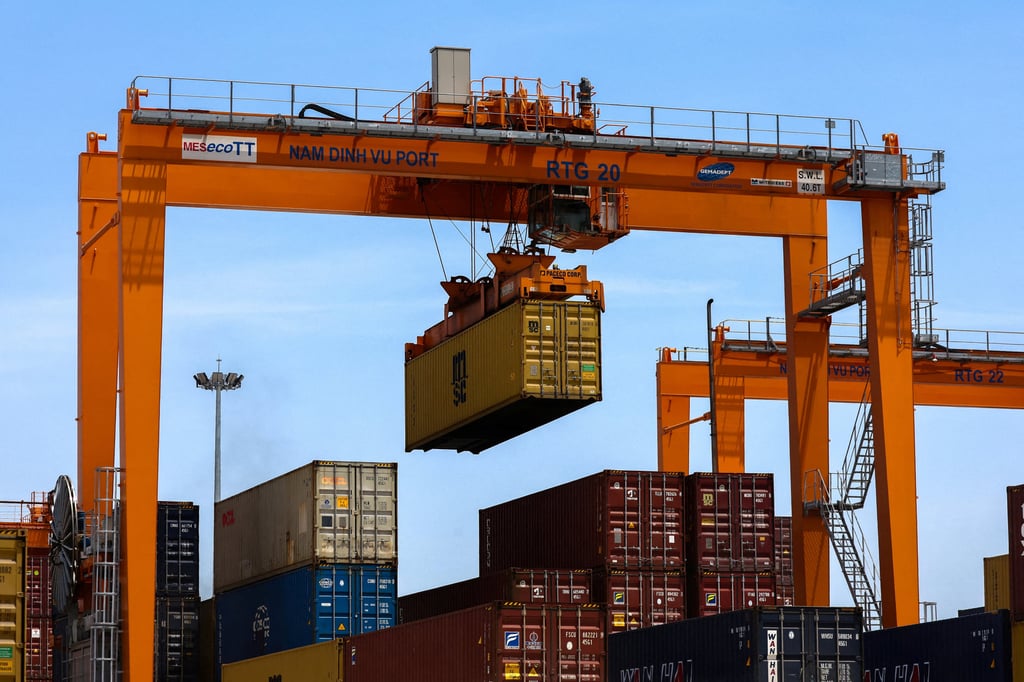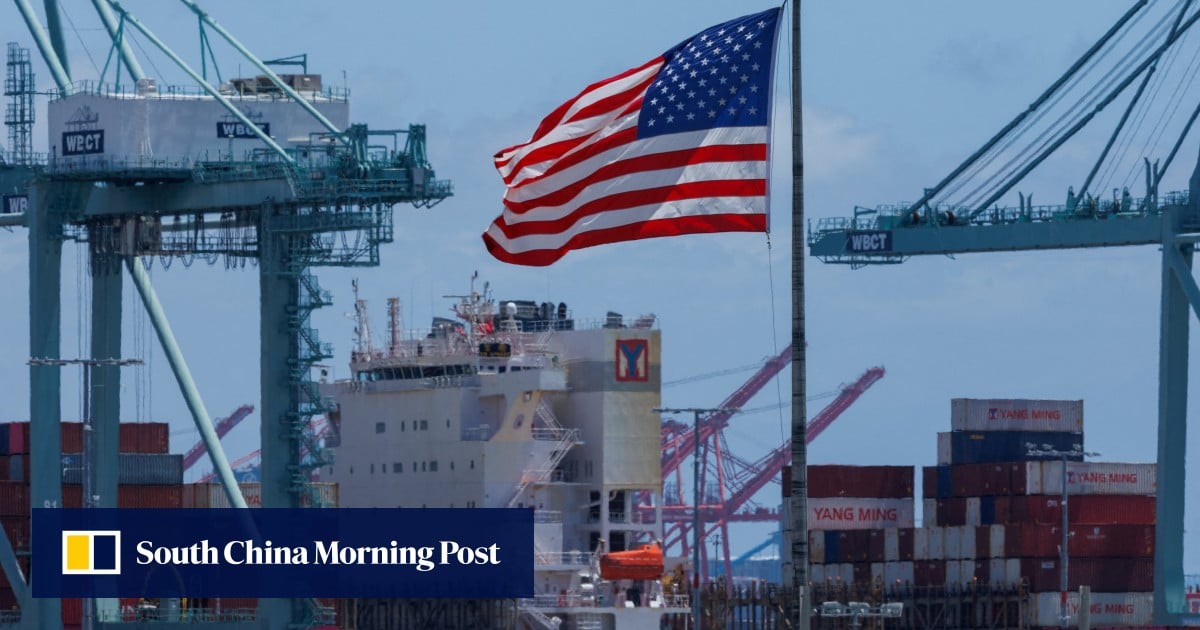Those highs flip the normal historical pattern, where trade is stronger in the latter part of the year as Asian suppliers ship to the US ahead of Christmas holidays. The threat of new US tariffs starting in early July is forcing companies to get goods onto vessels and to the US as quickly as possible.

A container is loaded onto a cargo ship docked at Hai Phong port, Vietnam, in April after US President Donald Trump announced a 90-day pause on tariffs for many countries. Photo: Reuters
The US trade deficit has blown out this year as companies try to deal with the sudden changes to Washington’s tariff and trade policy. While a sharp rise in pharmaceutical imports from Europe has contributed to the shortfall, Asian nations are the largest single contributor to the gap.
The forecast is for the US trade deficit to have been US$91 billion in May, enough to take it to almost US$643 billion so far in 2025 – well beyond the previous record for this stage of the year set during the pandemic.
If Trump imposes historically high duties on countries across Asia in early July as he is threatening to do, that surge in exports could quickly reverse, undermining economic growth across the region.
